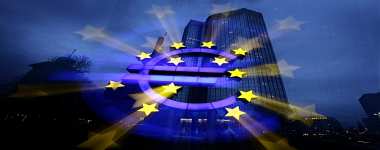The fact that the 24 members of the European Central Bank’s (ECB) governing council – including Germany – agree that further unconventional measures should be deployed if necessary to boost inflation, was clearly the main news in global monetary policy last week.

Whatever differences were behind the ECB’s split decision in September to cut rates and purchase asset-backed securities along with covered bonds have now been set aside.
Although the ECB didn’t expand its stimulus measures last week, its president, Mario Draghi, went to great lengths to emphasize to that the ECB’s guidance and emphasis on expanding its balance sheet had been “signed by the whole Governing Council unanimously.“
In his prepared statement, Draghi reiterated the guidance from recent months that the council was unanimous in its commitment to using additional unconventional instruments if necessary to address the risk of too prolonged a period of low inflation.
But Draghi then went one major step further, saying the council had “tasked ECB staff and the relevant Eurosystem committees with ensuring the timely preparation of further measures to be implemented, if needed.”
The implication is clearly that the ECB is preparing markets for further stimulus in December when a likely downward revision in its latest economic forecasts provides it with solid reasons.
This mirrors the situation in September when the ECB cut its rate to essentially zero at 0.05 percent and embarked on quantitative easing (QE) by purchasing assets.
In September, ECB staff cut its 2014 growth forecast to 0.9 percent from 1.0 percent and the 2015 forecast to 1.6 percent from 1.7 percent. The forecast for inflation this year was revised downward to 0.6 percent from a June forecast of 0.7 percent while the 2015 forecast was maintained at 1.1 percent.
Since then, the European Commission has cut its 2014 growth forecast to 0.8 percent and the 2015 forecast to 1.1 percent. Euro area inflation in October was a mere 0.4 percent, well below the ECB’s objective of inflation that is just under 2 percent.

